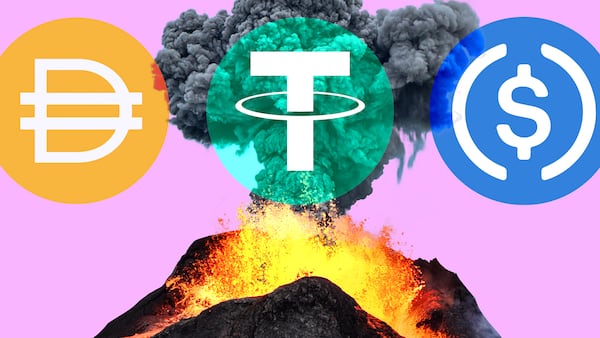- ESRB warns of money-market fund-style stress on stablecoins.
- Dollar dominance of stablecoin hurts the EU’s digital finance ambitions.
- Stablecoin market grows to $308 billion.
Stablecoins are already a $308 billion market that some suggest could reach $1 trillion by the end of this decade.
But for the European Union Systemic Risk Board, the burgeoning market poses real risks for both crypto and traditional finance.
In a report this month, the ESRB called for the EU’s Markets in Crypto-Assets, or MiCA, regulations to be strengthened against non-compliant stablecoins used by investors in the region.
The report said such measures are necessary to protect the eurozone from disorderly outflows from the region’s financial markets.
The liquidity that underpins stablecoins could negatively affect bond markets during extreme panic. That’s because the bulk of the reserves held by large stablecoin issuers, such as Tether and Circle, are parked in short-term US Treasury bills.
There are roughly $129 billion in bonds backing USDT and USDC, respectively.
The report warned that stress scenarios could trigger a bank run and prompt a mass dumping of these reserve assets.
During the 2020 Covid-19 pandemic, funding markets froze, and investors rushed to sell commercial paper and treasuries in the ensuing market.
The rush temporarily pushed short-term yields higher, as those assets quickly became illiquid, until the Federal Reserve intervened with an emergency liquidity injection.
The episode exposed how quickly supposedly safe, cash-like assets, such as commercial paper and treasuries, can become illiquid during periods of market stress.
For the ESRB, the fear isn’t about crypto’s next crash but who gets singed when the market tries to sell its way out of one.
Outside the EU, similar concerns exist.
Stablecoin flight
Standard Chartered recently predicted that stablecoins could trigger up to $1 trillion in capital flight from emerging markets in the next three years.
The US Treasury Department also estimates stablecoins could force $6.6 trillion in US deposit flight as users seek higher yields.
Other policymakers say such fears are overblown.
On Monday, Jonathan Gould, the US Comptroller of the Currency, said large-scale capital flight wouldn’t happen overnight and that banking officials and finance regulators would intervene in a large-scale bank run.
In September, Faryar Shirzad, Coinbase’s chief policy officer, dismissed links between stablecoin growth and bank deposit erosion, calling it “a myth.”
Still, the EU’s systemic risk board report says stablecoins can threaten the region’s digital finance ambitions.
The report stated that the global dominance of dollar-pegged stablecoins issued by companies such as Tether operating outside the eurozone raises concerns about monetary sovereignty.
Tether is the issuer behind USDT, a stablecoin tethered to the US dollar.
USDT accounts for almost 60% of the stablecoins in circulation, and Tether has also launched its own blockchain, Plasma, to grow its stablecoin market.
Osato Avan-Nomayo is our Nigeria-based DeFi correspondent. He covers DeFi and tech. Got a tip? Please contact him at osato@dlnews.com.









